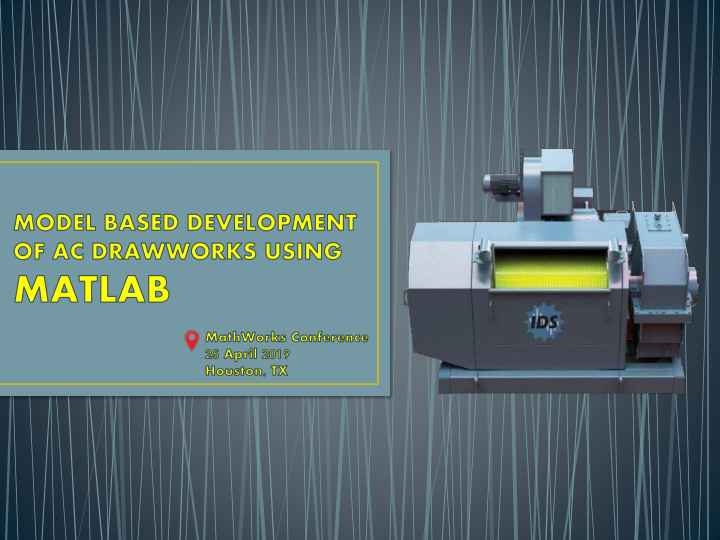



Traditional Model Based
System Requirements are incomplete and Requirements not integrated in the design process Control System Design Analysis Program Design Coding Errors found too late in the process while exhausting expensive resources Testing Operations
Project Initiation, Requirements Gathering Communication Estimating, Scheduling, Tracking Planning Analysis, Design, Performance Simulation Modeling Code, Test Construction Delivery, Support Deployment
Uses of System Models • Simulation, Visualization • Static System Analysis, Formal Verification • Virtual Fault Injection • Synthesis of Implementations & Test Suites • Documentation, Presentation
Step 1: Modeling a Plant • Incorporating Mechanical and Electrical aspects of all the underlying components. • Identifying Rig dynamics and states that affect the process operation. • Assessing Inertia of each mechanical component in the assembly and adjusting for Potential Energy. • Combining all of them with the help of MathWorks tools and creating a functional model. + + →
Step 2: Analyzing and synthesizing a controller for the Plant • Mathematical Model thus conceived is used to identify dynamic characteristics of the Plant model. • Objective is to incorporate all the I/O and control the equipment in an optimum manner without delay or overshoot and ensuring control stability. • Requisite corrective behavior is achieved. • System ID and Control Systems Toolboxes are utilized to fine tune nuances. + + →
Step 3: Simulating the Plant and Controller • Time response of the dynamic system to complex, time-varying inputs is investigated. • Simulation allows specifications, requirements and modeling errors to be found immediately, rather than later in the design effort. • Controller can be optimized with the virtual Plant model and can be made compatible to be converted into Machine Code for release on a industrial processor. + + →
Step 4: Integrating all phases and Deploying the Controller • Ideally done via automatic code generation from the controller developed in Step 2. • Controller performance is not perfect in real world condition. • An iterative debugging process is carried out by analyzing results on the actual target and updating controller model further. • All of the above can be done in a Graphical Interface. + + →
Design Implement Deploy Simulate
Block Height Block Speed
Block Height Block Speed
Block Height Block Speed
Block Height Block Speed
Block Height Block Speed
Block Height Block Speed
• Optimize system performance – Developed in a single environment – No cosimulation • Find problems before building hardware using HIL • Discover integration problems using simulation – No cosimulation • Create accurate, reusable plant models quickly and easily. • Robust Control.
Recommend
More recommend